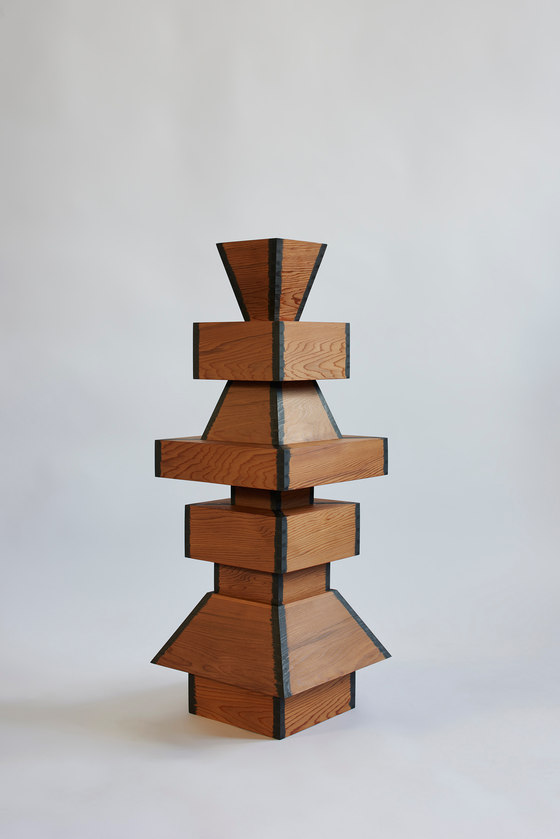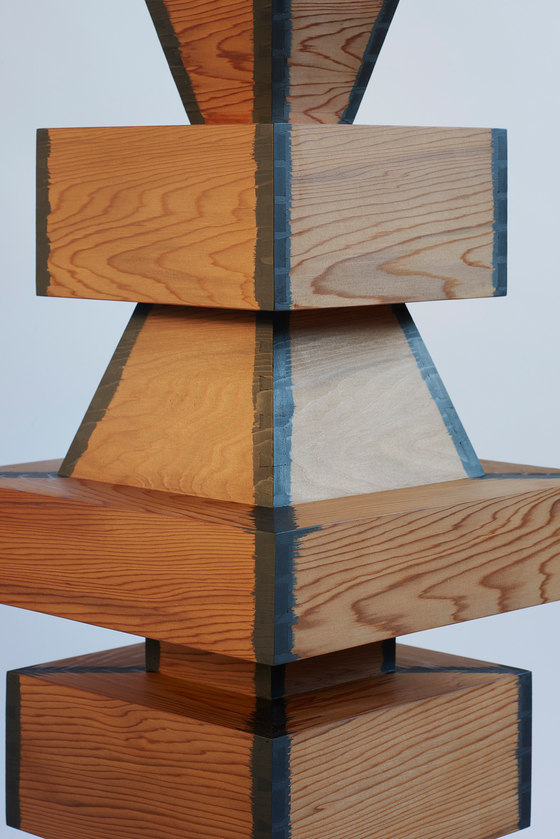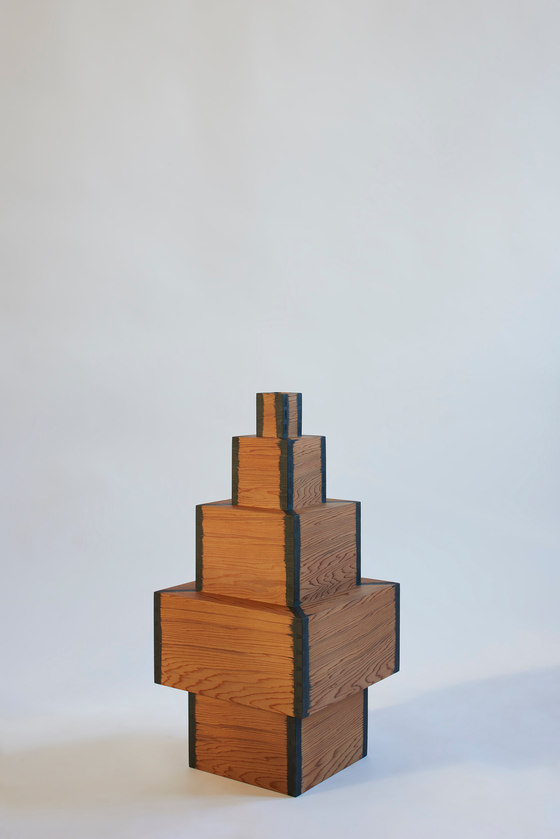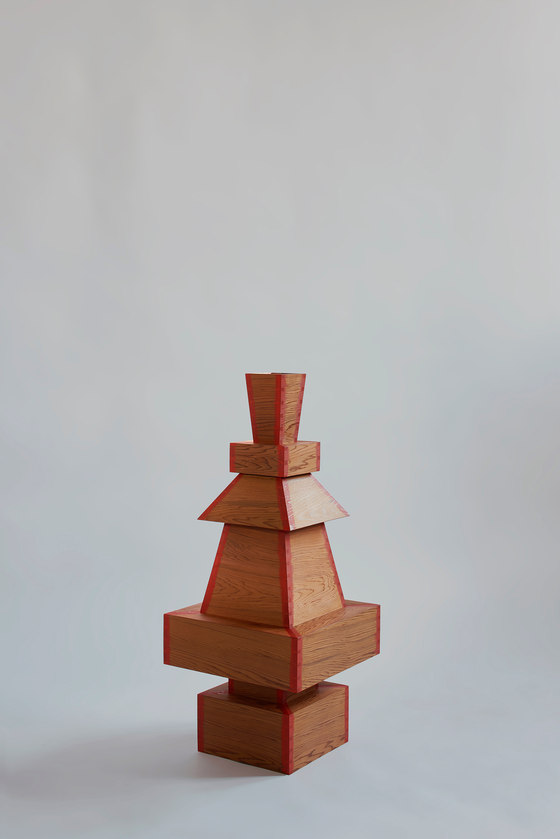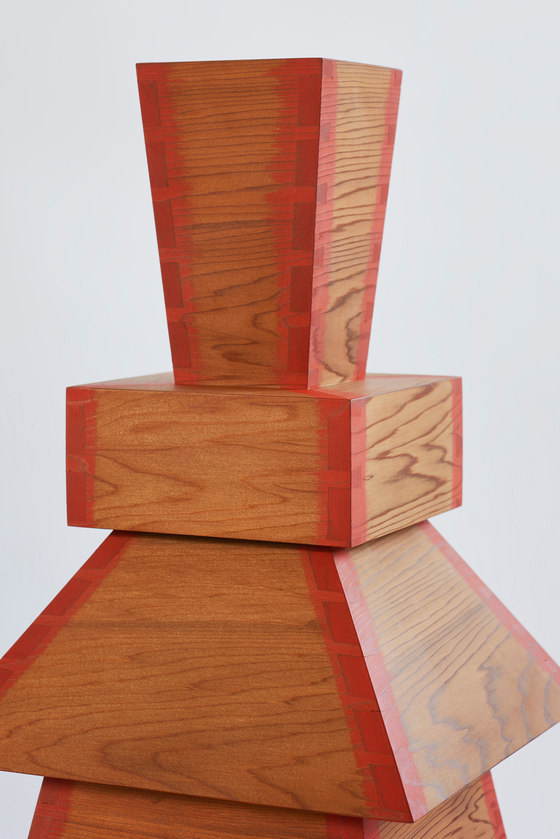In his series Hato Vase I - III, designer Rio Kobayashi creates wooden vases which ask us profound questions about the contemporary design world and the place of traditional craftsmanship within it.
London-based maker and designer Rio Kobayashi stacks simple shapes made from cedar on top of each other: single components of basic symmetric shapes joined together by handmade connections of compound and dovetail joints. It is from these joints that the vases draw their name - dove, or hato in Japanese.
The results are a series of totem-like wooden sculptural vases with edges painted in black and vermilion Japanese ink - the colour hiding the intricate woodwork of the joints and distracting the eye from more technical details. More than mere decoration, Rio Kobayashi sees these details as metaphors for the way we relate to craft in the world of modern design. ‘Machine-made goods are preferred by many buyers in our times and craftsmen can hardly compete’ Kobayashi explains.
His solution is to hide the imperfections of his handmade joints; making the pieces more approachable to a larger audience, whilst at the same time allowing those who are interested to discover the beautiful details of his craftsmanship if they choose to look closer.
The influence of the traditional crafts of his native Japan are ever-present in Kobayashi’s work. The black and vermilion ink he uses in this Hato Vase series open a dialogue with customs and conventions of Japanese calligraphy where the brilliant red ink is used by masters of the craft to correct characters written by their disciples.
Kobayashi, who was born and raised in Tochigi Prefecture of Japan, explains that this is part of what makes the Hato vases particularly personal pieces for him: “In my calligraphy classes, I was trying to be good, but my Hanshi papers were orange all over. But I still loved to do it - it was like meditation to me. And creating woodwork detail by hand is a similar experience.
I try to do it to perfection, but there are always tiny imperfections which make it human or natural. It is important to have teachers and learn from them, but it is also important to find your own way and then you realise that, sometimes, it is good to deviate from the rules.” For Rio Kobayashi the beauty of these pieces lies in the distinction caused by imperfection. No joint can ever be the same as another, and therein lies the wonder of human-made objects.
Rio Kobayashi


